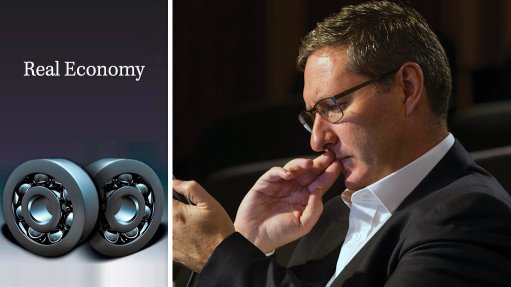
While South Africa has a relatively diversified economy, its mining industry remains an important source of export earnings and jobs. Therefore, the World Bank’s latest ‘Commodity Markets Outlook’ makes for sobering and uncomfortable reading.
In the report, the bank lowers its 2016 price forecast for 37 of the 46 commodities it monitors and warns that low prices are “likely to be with us for some time”.
The headline news, of course, is that the 2016 price outlook for oil has been reduced to $37/bl, from a forecast of $51/bl in October. However, the story for the portfolio of metals and minerals produced in South Africa is sadly similar.
The largest decline is expected in iron-ore prices, with the report forecasting a 25% decline in 2016, owing to reduced imports from China’s steel producers and new capacity in Australia and Brazil.
Iron-ore prices fell from an average of $96.9/t in 2014 to $55.8/t last year, with prices plunging 15% in the fourth quarter to average $47/t. The price of the ferrous mineral fell to $41/t in December and the bank is forecasting an average price of $42/t for 2016. It is also only projecting a modest recovery to $51/t by 2020.
Iron-ore prices have fallen for eight consecutive quarters and are currently barely one-fourth of the high reached in 2011.
Besides iron-ore, other nonenergy commodity prices fell 4% in the fourth quarter of 2015 to a level almost 40% below their early 2011 highs. Metal prices fell 8%, while agriculture prices fell 2.3%, marking the seventh consecutive quarterly decline. “El Niño-related concerns in some regions did little to support prices on global commodity markets,” the report notes.
Most metals prices are expected to continue to fall in 2016, with iron-ore’s weak performance likely to be followed by nickel, which is expected to decline 16%, and copper, which is expected to be down 9%.
Precious metals are also expected to remain under pressure, with gold prices having declined during 10 of the past 12 quarters, reaching $1 105/oz in the fourth quarter of 2015 – a drop of one-third since its quarterly peak of $1 718/oz in the fourth quarter of 2012.
Platinum prices are expected to continue to fall in 2016, despite having declined more steeply last year than other precious metals, as South African mine production ramped back to full capacity following labour unrest in 2014.
“Demand from the auto sector remains buoyant, but the outlook for diesel vehicles, which mainly use platinum output in catalytic converters, has been dented by the Volkswagen diesel emissions scandal,”the report states.
The bank expects average gold and platinum prices of $1 075/oz and $950/oz respectively in 2016.
Thermal coal prices, meanwhile, have fallen by more than 60% since the beginning of 2011 because of chronic oversupply and falling imports into China and India, while Europe and the US continue to shun coal amidst a global drive towards cleaner energy collapsing gas prices and increasing power efficiency.
The authors expect average coal prices to decline 13% in 2016 to $50/t, on continued weak demand and oversupply.